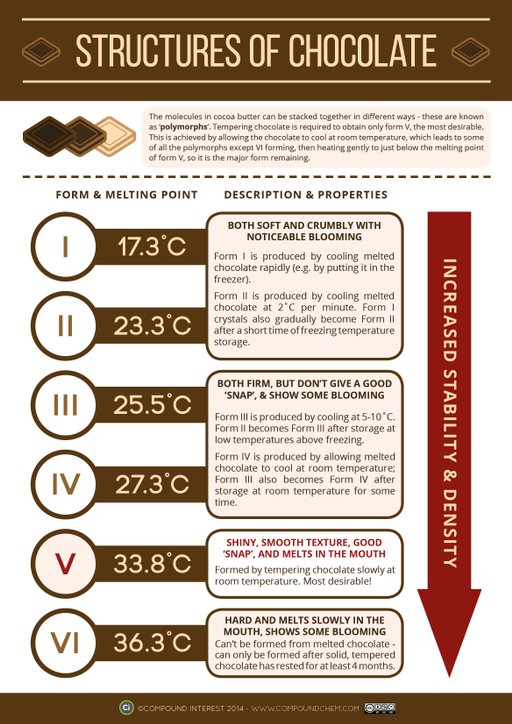Much tastier space chocolate made in microgravity as novelty product for marketing, educational and scientific reasons.
Updated: 2025-01-11
Created: 2018-11-01
Status
An initiative published in 20171, which did not move into an experimental phase yet.
Applications
- Raw chocolate of many types
- All chocolate deserts
- Molecular gastronomy - food science
Why & Solution
Cocoa butter is the main ingredient in chocolate and it consists primarily of fat molecules. The arrangement of these fat molecules determines the structure of chocolate. Cocoa butter has at least six different structures or ‘crystal forms’, which is called ‘polymorphism’. Structure influences properties like appearance, taste, quality and texture.2
There is no sedimentation in orbit because gravity doesn’t drag down the denser ingredients in a mixture. That means the crystal structure of chocolate might get larger—and might taste better—if it’s made in space. Candy-making in orbit could be a way to make “space commercialization real for people.3
Revenue Estimation
Cost Estimation
Likely starting from \$150,000 - \$200,000 per kilogram.
Market Size Estimation
- The most expensive chocolate in the world.
- The most special chocolate in the world.
- Expensive and rare by itself without added gold or diamonds.
Earthly Solution Risk
Taste might be imitated eventually, but uniqueness remains.
